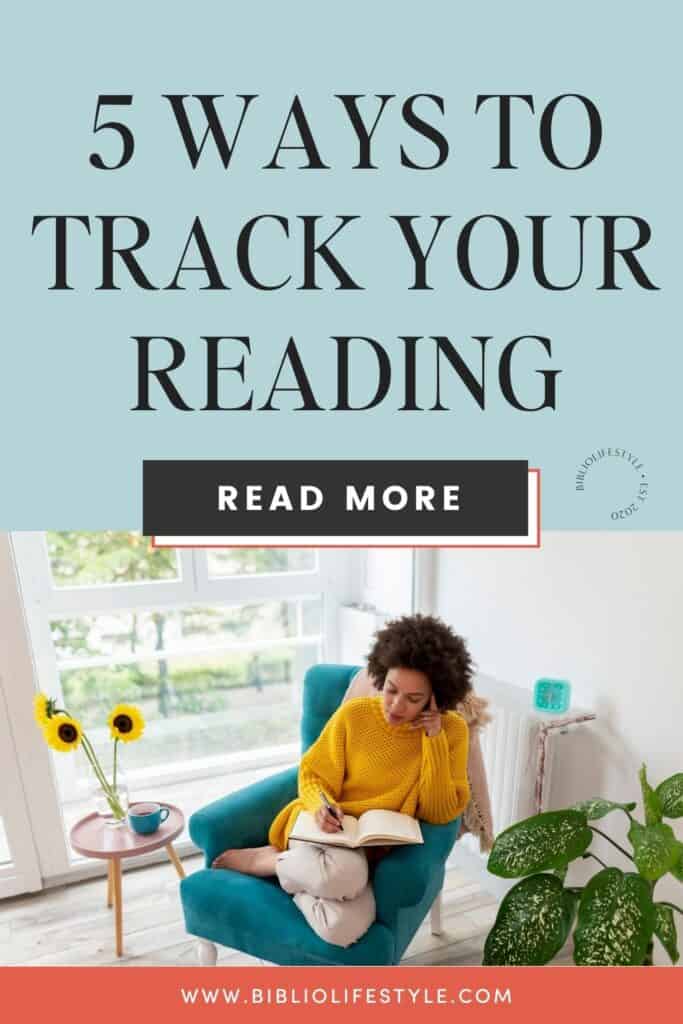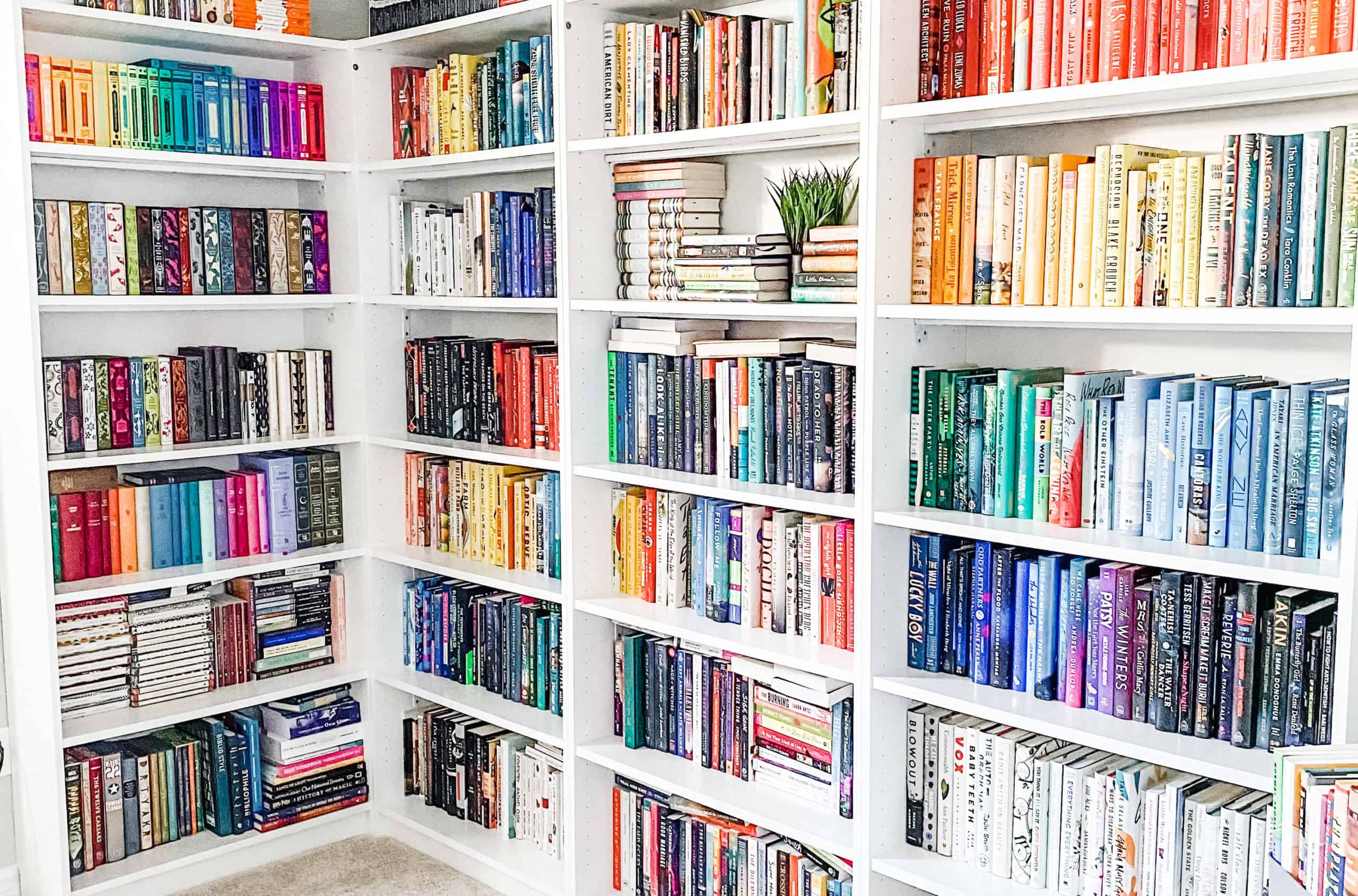Last Updated on January 18, 2024 by BiblioLifestyle

As we turn our journals to new pages for the new year, one of the most commonly discussed things at BiblioLifestyle HQ is how we track our reading. To get an accurate picture of your reading life, you need to start tracking your reading.
We’re all in different stages of our relationship with reading; the same can be said for tracking our reading. If you’ve been tracking your reading for some time now, you may be looking for ways to improve. On the other hand, if you’re new to it all, you may be trying to decide what will work best for you. So we also discuss the 7 Things We Are Tracking In Our Reading Journal in a separate post to inspire readers if they’re unsure what to track.
But in this article, I will be sharing five ways you can track your reading, and I hope these methods will provide some inspiration and practical approaches to get you started. My recommendation is to try the technique that speaks to you first.
“There are no fast and hard rules to tracking your reading. Feel free to mix it up, tweak methods, and make it your own. In time you’ll learn what works best for you and what doesn’t, and you’ll narrow down the information you want to keep tracking!”

5 Ways To Track Your Reading
1. READING TRACKING WEBSITES
The most popular website is Goodreads, and they have both an app and a website. We recommend using their barcode scanner to scan your book’s barcode and quickly upload the books you own to your TBR list if you use the app. Then, as you read them, you can mark them as read, and they’ll then move to your read list. You can create lists with different names and keep track of your books that way.
The StoryGraph provides a more reader-friendly experience with a fantastic added feature of getting other book recommendations based on the books you love with added consideration for mood, pace, and page. Front and center are their reading stats feature, and you’re able to get in-depth statistics on your reading and see everything broken down and analyzed.
Both Goodreads and the StoryGraph have a reading challenge function where you can set a numerical goal for the year. Then, once you’ve read a book and you’ve marked it as read, you’ll see your status towards achieving your goal. The StoryGraph, however, reigns supreme because of its clean design, that’s super easy to navigate, while the Goodreads interface is clunky. However, if the added feature you’re looking for is connecting and interacting with an extensive reading community, opt for Goodreads.
LibraryThing is pretty similar to Goodreads, with the added perk of connecting with and searching your local library and bookstore. You also have the option of making your account completely private and not having any social interaction. It’s another excellent way to keep track of your personal book collection and discover new titles.
Also worth reading is The 5 Best Book Tracking Apps for Readers article.
2. WISH LISTS
Some readers keep track of the books they want to read via wish lists on websites where they shop online. Most popular amongst them are Amazon, Book Depository, and Bookshop.

3. SPREADSHEETS
Creating a spreadsheet (Excel or Numbers) with common categories such as title, author, number of pages, and star rating is a great way to track your reading. Then, create a new sheet or open a new tab in the same file and continue logging your reads at the start of a new year.
Spreadsheets can also work well for logging the books you want to read. To learn more about tracking books you want to read, check out our 3 Things You Can Do To Improve Your Reading Life.
4. PHYSICAL JOURNALS
Tracking via old-fashioned pen and paper is top of the list for most readers. You can track by day, week, or by month. Track the books you want to read as well as the books you’ve read. You can also break down your reads by genre, author (male, female, non-binary), and rating system. You can even get creative and draw bookshelves, book stacks, charts, and graphs.
Also worth reading is our 13 Things We Are Tracking In Our Reading Journal article.
My Recommended Journaling Supplies
My recommended preprinted reading journals:
My recommended bullet journal and must-have supplies:
- Scribble & Dot® Bullet Dotted Journal
- Sharpie S-Gel Pens
- Tombow Dual Brush Pen, Black
- Tombow Dual Brush Pen Art Markers, Tropical, 10-Pack
- Tombow MONO Permanent Adhesive Applicator, 1/3-Inch
- Westcott 8ths 12-Inch Beveled Transparent Ruler
5. A COMBINATION OF METHODS
At BiblioLifestyle HQ, this is our favorite way to track our reading. Here are some combinations you can try:
- Use Goodreads, The StoryGraph, or LibraryThing to take inventory of the books you own, and use your physical journal to track and make notes about the books you’ve read.
- Use your online wish lists to track the books you want to read and a spreadsheet to track the ones you’ve read.
- Use a physical journal to track the books you want to read at some point in your life and keep a log of those you’ve read via an online app or a spreadsheet.

Frequently Asked Questions About Tracking Your Reading
Is there an app to track your reading?
Yes, there are several apps available to track your reading habits. Goodreads, for instance, is a popular option that lets you catalog the books you’ve read, are currently reading, or want to read in the future. You can also view reviews from other readers, rate books, and make book recommendations to friends. But there are also apps like StoryGraph, Italic Type, Bookshelf, and Bookly. You can read more about the pros and cons of all these apps in my The 5 Best Book Tracking Apps for Readers article.
How do you track what you’ve read?
There are several methods you can use to track what you’ve read. One of the simplest ways is to maintain a reading journal, where you can jot down the titles of the books you’ve read, along with your thoughts and observations. You can also use spreadsheets or other digital tools like Google Sheets or Excel to keep track of your reading list. Another popular method is to use apps like Goodreads or StoryGraph, which not only help you track the books you’ve read but also provide recommendations based on your reading habits. For those who prefer a more visual approach, creating a bookshelf of ‘read’ books in your home or a virtual one on platforms like Instagram can be both rewarding and aesthetically pleasing.
How do I track my daily reading?
To track your daily reading, you can employ a few methods depending on your preferences. A traditional and simple way is to keep a reading diary or journal, noting what you read and how much you read each day. If you prefer digital tools, you can use a spreadsheet where you record the date, title of the book, and number of pages read. Many reading apps, such as Goodreads or StoryGraph, come with built-in features to track your daily reading progress. Alternatively, you can use time-tracking apps to record the amount of time you spend reading each day. Remember, the key is consistency in logging your reading activity daily.
There are no fast and hard rules to track your reading. So feel free to mix it up, tweak methods, and make it your own. In time, you’ll learn what works best for you and what doesn’t, and you’ll narrow down the information you want to keep tracking!
Do you track your reading?
Do you have a method that’s already working for you? Are you planning to try something new or finally start tracking? Let’s talk all about tracking our reading in the comments below.
ADDITIONAL READING:




+ show Comments
- Hide Comments
add a comment